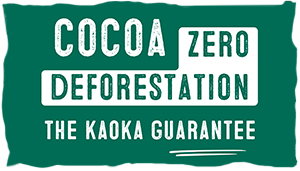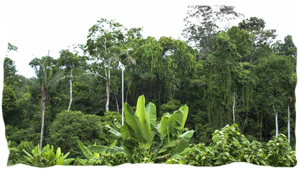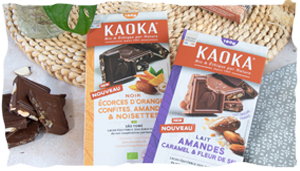Cocoa Beans : Health benefits ? How to use and eat it ?
Around 3,000 years ago, cocoa beans were originally used in a wide variety of ways by the Mayan, Toltec and Aztec civilisations. Cocoa beans could be eaten raw or as a beverage, or dried and used as money and a unit of exchange. This money continued to be used until colonial period. The Aztecs used to make drinks flavoured with cocoa and plants for religious rites and major festivities. In the 16th century, cocoa beans imported to Europe by the Spanish were ground to make a bitter drink. Arriving in France in the 17th century, cocoa consumption evolved. Over the centuries, cocoa was transformed into the chocolate we know today. Today, more and more of you are interested in cocoa beans, raw or roasted, for their taste and health benefits.
Before we tell you more about how to eat and the health benefits of cocoa beans, let’s start at the beginning: growing cocoa, harvesting it and processing it to bring out its full flavour.
- From cocoa tree to cocoa bean
- Cocoa beans: eaten whole and raw, roasted and crushed or processed into chocolate
- Can I make chocolate from cocoa beans?
- What are the benefits of cocoa beans?
- Where can I buy Kaoka® cocoa beans?
From cocoa tree to cocoa bean
The cacao tree is the origin of chocolate. Of the genus Theobroma, it is an endemic tropical species native to equatorial forests with a hot, humid climate. Although the trees can grow up to 15 metres high, today they are trimmed to a maximum of around ten metres to make it easier to harvest the fruit.
How cocoa beans grow?
The cocoa tree produces a very large number of small white flowers (thousands), only a few of which are fertilised and bear fruit. Known as cocoa pods, these fruits grow on the branches of the tree, or directly on the trunk. Oval-shaped and elongated, they measure between 10 and 30 cm in length. Depending on the variety, the pods change colour from green/purple to yellow/orange when they reach maturity. Cocoa has the distinction of being one of the largest fruits in the world after a total of 5 to 7 months of maturing.
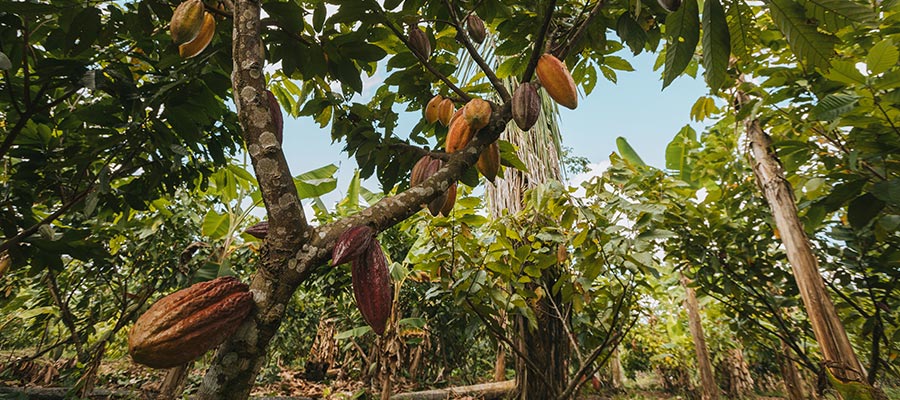
Cocoa pods contain seeds: cocoa beans.
Did you know that? The pods contain an average of 30 to 50 cocoa beans. Fresh cocoa beans look like oval pulp seeds. Tender, they are covered in a sweet, slightly viscous mucilage. The beans have different aromas and flavours depending on the variety of cocoa tree: Forastero, Trinitario, Nacional, Amelonado, Criollo, etc.How are cocoa beans harvested?
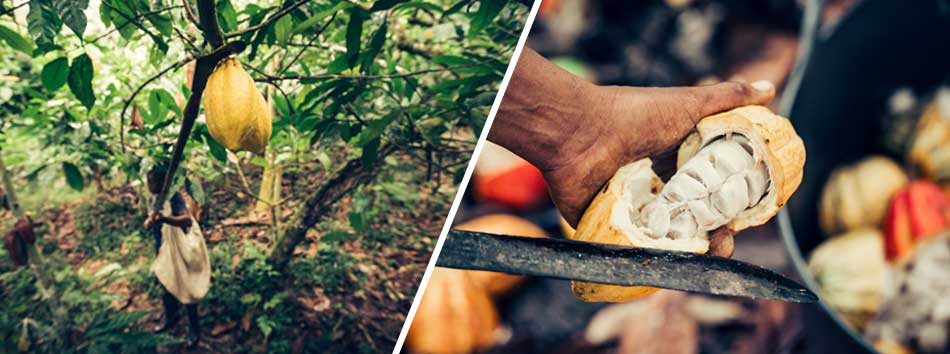
Cocoa pods are picked from cocoa trees by farmers with machetes. To reach fruit out of range, they use a long stick to which a sharp tool is attached. The shell of cocoa pods is hard and thick. With a precise movement, the producer breaks the cocoa pod with a machete to extract the precious cocoa beans. This step generally takes place in the shade of the cocoa trees, directly on the plantation. The fresh beans are separated by hand and stored in a bucket or bag. When fresh, they are enveloped in a white pulp called mucilage. You can taste the freshly shelled beans and the juice that goes around them. The pulp has a deliciously fruity, tangy flavour.
Fermentation of the cocoa bean
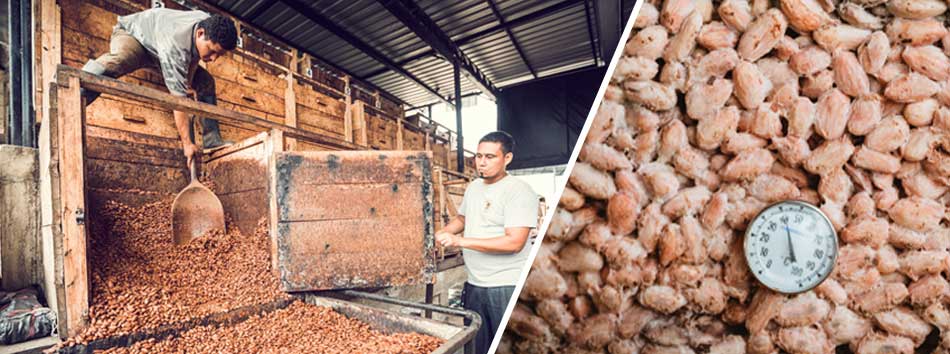
The extracted cocoa beans are then fermented. This stage is crucial for developing the flavours of the cocoa beans. The protocol is precise and rigorous in order to obtain high quality cocoa beans. Traditionally, these beans are fermented directly on the plantation in banana leaves. But this method has many shortcomings and does not allow us to control the quality of the beans. At Kaoka, the beans are fermented in specially adapted structures. They are immersed in large wooden vats where they are stirred and aerated regularly to ensure controlled fermentation. Fermentation is divided into two distinct stages:
- Anaerobic alcoholic fermentation: Protected from the air, the yeasts convert glucose into ethanol.
- Acetic fermentation: The ethanol previously obtained is transformed into acetic acid by bacteria in the presence of air. The acetic acid then penetrates to the heart of the cocoa bean and causes the cocoa flavour precursors to appear.
Brewing and temperature control throughout the process are decisive factors in the aromatic quality of the chocolate. Poorly fermented cocoa beans will give chocolate aromatic defects.
Drying cocoa beans
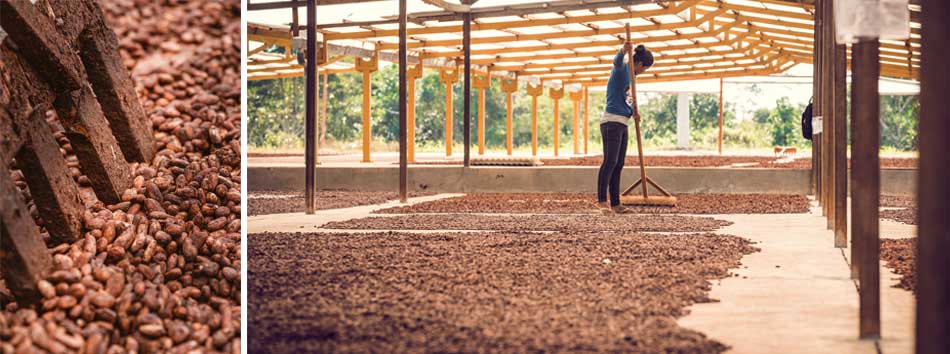
Once the cocoa beans are fully fermented, they are taken out of the fermentation crates and spread out in solar or gas dryers for a period of two to three weeks. Drying the cocoa beans is the essential step in ending the fermentation process. Solar dryers are generally large, well-exposed wooden surfaces. The cocoa beans are stirred very regularly using large rakes. Drying allows the polyphenols to oxidise and the excess acetic acid to evaporate.
Optimum drying is essential to avoid the risk of mould during transport, which would spoil all the work done beforehand.
Cocoa beans: eaten whole and raw, roasted and crushed or processed into chocolate
Raw whole cocoa beans
After fermentation and drying, a whole bean measures between 2 and 3 cm long and 1 to 2 cm wide. It is brown in colour, with a slight purplish tinge.
Can cocoa beans really be eaten raw?
In Raw Food, food must not be heated above 42°C to be considered raw. Beyond this temperature, the nutritional qualities could be altered. Over the last few years, we have seen more and more ‘raw cocoa‘ products emerging. However, to be a purist, raw cocoa can only correspond to fresh cocoa, i.e. cocoa that has been freshly de-bibbed. Fresh cocoa then goes through the fermentation and drying stages, where it is subjected to temperatures above 45°C. During the fermentation phase, the cocoa will reach around 50°C. The temperature also rises during the cocoa drying phases (in solar or gas dryers).
Did you know? In addition, commercially available cocoa beans may have been pasteurised. This process eliminates the risk of pathogenic bacteria. Having been heated to 100°C, they should no longer be considered raw.
Even so, a cocoa bean that has not yet been roasted will offer better nutritional and therapeutic properties than a roasted bean. Unlike chocolate, a cocoa bean is considered a superfood: it contains no added fat or sugar.
How do you eat whole cocoa beans?
There are different ways of eating whole cocoa beans. Some people eat them whole without shelling them, but we advise you to remove the cocoa shell (the thin dry film that covers the bean) for optimum enjoyment.

How do raw cocoa beans taste?
Neither salty nor sweet, raw cocoa beans reveal slightly bitter and very fruity notes when tasted. They go equally well with sweet and savoury dishes.s.
- As a snack: you can eat whole cocoa beans at any time of day, with or without nuts and oilseeds.
- As a drink: cocoa beans can also be enjoyed as an infusion: steep 4 to 5 whole cocoa beans in boiling water for around ten minutes.
- As an aperitif: surprise your guests with cocoa beans to nibble on as an aperitif
- In an arranged rum: infuse whole cocoa beans in rum with sugar to make your own cocoa-infused rum!
Roasted cocoa beans or cocoa nibs
The cocoa beans are roasted in large metal cylinders, i.e. they are roasted while being stirred regularly with large circular movements. Roasting reduces the bitterness of the cocoa beans and brings out the cocoa’s aromas.
After being roasted, they are then crushed and separated from their shell. This is how we obtain cocoa nibs.
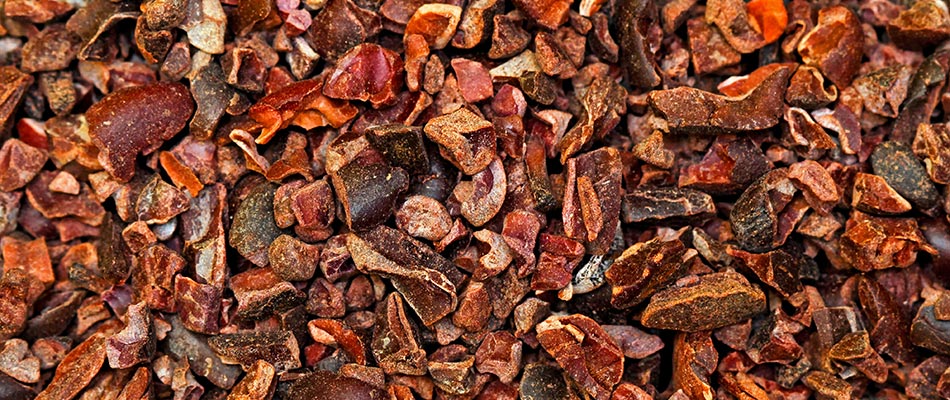
Le grué de cacao correspond donc à des éclats de cacao torréfiés. Ces éclats ont une texture croustillante très agréable en bouche. S’il est vrai qu’ils n’ont pas le goût du chocolat, ils offrent une délicieuse saveur de cacao grillé. Le grué de cacao est une matière noble qui permet d’agrémenter de nombreux mets : aussi bien sucrés que salés.
Cocoa nibs are roasted cocoa nibs. These chips have a crunchy texture that is very pleasant on the palate. They may not taste like chocolate, but they have a delicious roasted cocoa flavour. Cocoa nibs are a noble material that can be used to enhance a wide range of dishes, both sweet and savoury.
How can cocoa nibs be used in sweet recipes?
Cocoa nibs can be sprinkled on many sweet recipes. It goes perfectly with a wide range of fruits and adds an irresistible crunch to any dish:
- Porridge
- Granola
- Stewed fruit
- Chia pudding
- Smoothie bowl
- Acai bowl
- Nice cream
- Cookies
- Chocolate mousse
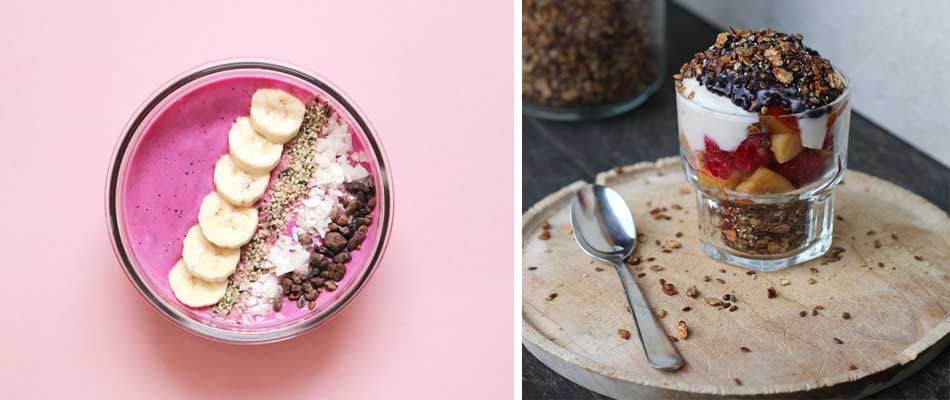
How can cocoa beans be used in savoury recipes?
- As a salad : you can add a tablespoon of cocoa nibs to your salads or buddha bowls to give them an exotic flavour, a slight bitterness and, above all, a crunch. Cocoa nibs go very well with quinoa.
- With wine: cocoa beans are a flavour enhancer, multiplying the flavours of a good wine tenfold. Between two vintages, they bring the taste buds back into focus without altering the aromas.
- With cheese : just as you can with dried fruit, you can add cocoa beans to a cheese tasting experience. Try a slice of Saint-Nectaire or St-Marcellin cheese with a thin layer of fig jam and a sprinkling of cocoa nibs! Delicious!
- Like a condiment: cocoa nibs add unusual notes to foie gras, fish dishes and meats such as game.
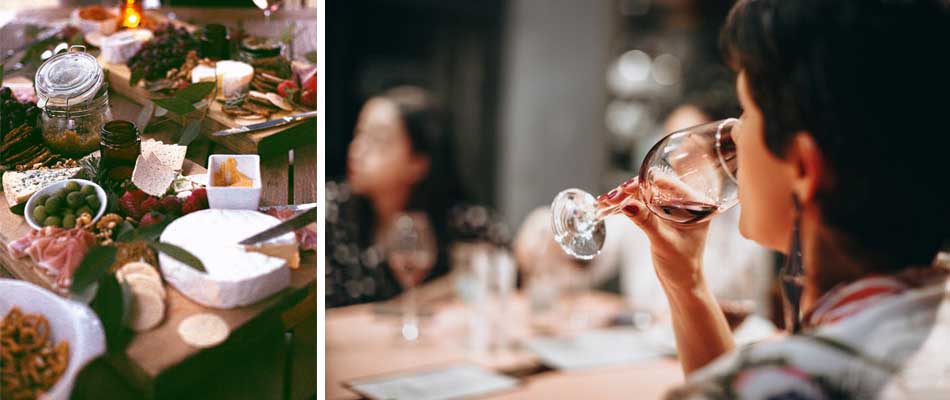
What spices should I use with raw cocoa beans?
Cocoa beans go wonderfully well with many spices such as :
- Tonka bean
- Vanilla
- Nutmeg
- Chilli pepper
- Cinnamon
Can I make chocolate from cocoa beans?
Theoretically, yes! It takes a bit of time and organisation, but in reality, it’s not impossible!
If you’re using whole cocoa beans, you’ll need to roast them in a pan, shell them and then grind them finely to obtain a cocoa paste. If you are using cocoa nibs, simply grind them as they have already been roasted and shelled.
The cocoa paste should be smooth and homogenous. This paste is the basic ingredient of chocolate. You can then create your own chocolate recipes:
- Add as much cocoa butter (available in organic shops) as you like to make your chocolate melt in your mouth,
- add your favourite sugar in any quantity you like (whole cane sugar, rapadura, muscovado or coconut sugar)
- add vanilla or the essential oil of your choice
Si vous souhaitez approfondir le sujet, nous vous recommandons cet et celui-ci sur les.
If you’d like to find out more, we recommend this article on the composition of chocolate, and this one on the 14 steps to making chocolate.
To imitate the chocolate conching stage, it’s important to mix the cocoa paste well with the butter and sugar so that the mixture is perfectly homogeneous. Once you’re happy with the texture, you can temper your chocolate and pour it into your moulds. Leave to cool. Is your chocolate solidified? You can unmould it and enjoy!
What are the benefits of cocoa beans?
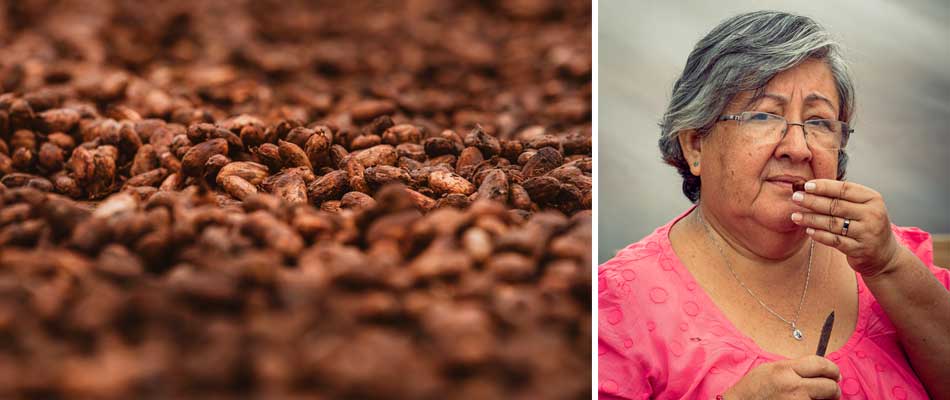
Cacao, or Theobroma cacao by its scientific name, means ‘food of the gods’ and is a combination of the two Greek words ‘theos’ meaning god and ‘broma’ meaning food. Cocoa lives up to its name, don’t you think?
To enjoy all their benefits, cocoa beans should be eaten unroasted. They contain 50% fat, 20% protein, 7% starch, 6% minerals, 5% water, 4% cellulose and 2% theobromine. This composition makes cocoa beans an excellent natural source of minerals (iron, magnesium, potassium), polyphenols (flavonoids) and antioxidants, which can have a positive impact on health.
What are minerals and what are their benefits?
Minerals are chemical elements that are essential for our bodies to function properly. They regulate numerous mechanisms. Hormones, muscle and bone constitution, heart rate, etc. Mineral deficiencies can lead to serious health problems. The raw cocoa bean contains many minerals, including magnesium, potassium, iron and calcium.
Magnesium helps combat stress, fatigue and anxiety. It also promotes good muscle contraction. That’s why a magnesium cure is recommended for people who want to combat cramps and spasms. Eating a few cocoa beans before your sports session can give you an extra supply of absorbable magnesium!
Potassium, in sufficient quantities, enables the muscles, heart and kidneys to function properly. It acts in association with sodium to help muscle contraction and regulate our nervous system. One of potassium’s many roles is also in the management of proteins and carbohydrates. As part of a balanced diet, cocoa beans provide an excellent supplement of potassium.
Iron, and above all its proper assimilation, is essential for the body to function properly. Its main function is to transport oxygen in the blood, and too great a deficiency can lead to unusual tiredness associated with cognitive problems, headaches, palpitations, etc. Iron deficiency is one of the most common nutritional deficiencies in Europe. To prevent anaemia, it is important to increase the number of dietary sources of iron (legumes, dried fruit, cocoa beans).
Among other things, calcium helps to strengthen bones and teeth. In combination with magnesium, it also contributes to muscle function and the body’s energy metabolism.
What are cocoa polyphenols? What are their benefits?
Cocoa beans are known to be rich in antioxidants in the form of polyphenols, particularly flavonoids. Polyphenols are a family of molecules naturally present in plants, with antioxidant and anti-inflammatory properties. Flavonoids are a sub-group of polyphenols. They are found in many foods, including certain fruits and vegetables, tea and wine. When we talk about cocoa polyphenols, we are interested in one of the six sub-groups, flavanols.
It would appear that consuming flavanols on a daily basis is beneficial to health:
- They are thought to improve cardiovascular health because they have a vasodilatory effect and promote better blood circulation.
- They help to lower blood pressure.
- They are thought to help prevent and repair damage caused by free radicals, the molecules that result from exposure to pollution and consumption of processed foods.
What is theobromine? What are its benefits?
Theobromine is a stimulant molecule with multiple health benefits. Its name comes from theobroma, the generic name for the cocoa tree, composed of the Greek roots theo and broma, meaning ‘food of the gods’. The suffix -ine is the one given to alkaloids. It is an alkaloid, i.e. a nitrogen-based molecule of plant and natural origin which, like caffeine, belongs to the methylxanthine family.
The advantage of theobromine is that, like caffeine, it is energising, but has a longer-lasting stimulating effect. Like caffeine, it blocks adenosine receptors and allows the secretion of a stimulating hormone.
Some positive effects of theobromine:
- Produces a feeling of well-being by stimulating the production of endorphins
- Is a mild diuretic, slightly increasing urinary secretion
- Stimulates the nervous system and improves concentration while inhibiting fatigue
- Has lipolytic (fat-burning) effects when eaten on a controlled diet
Where can I buy Kaoka® cocoa beans?
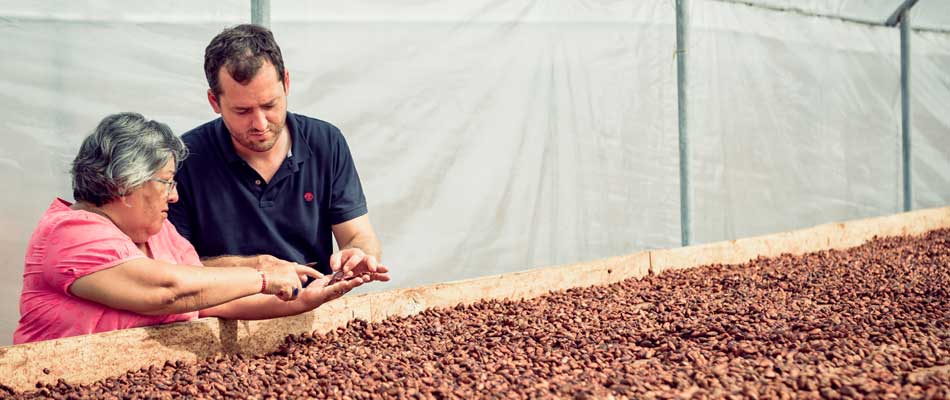
Unfortunately, we don’t sell them to private customers yet. But if you’re interested, don’t hesitate to send us a message to let us know :)
If you are a professional and would like to work on a bean-to-bar basis, please do not hesitate to contact us. We offer batches of high-quality cocoa beans from our own production facilities. We’ll get back to you as soon as possible and look forward to working with you on your projects.
